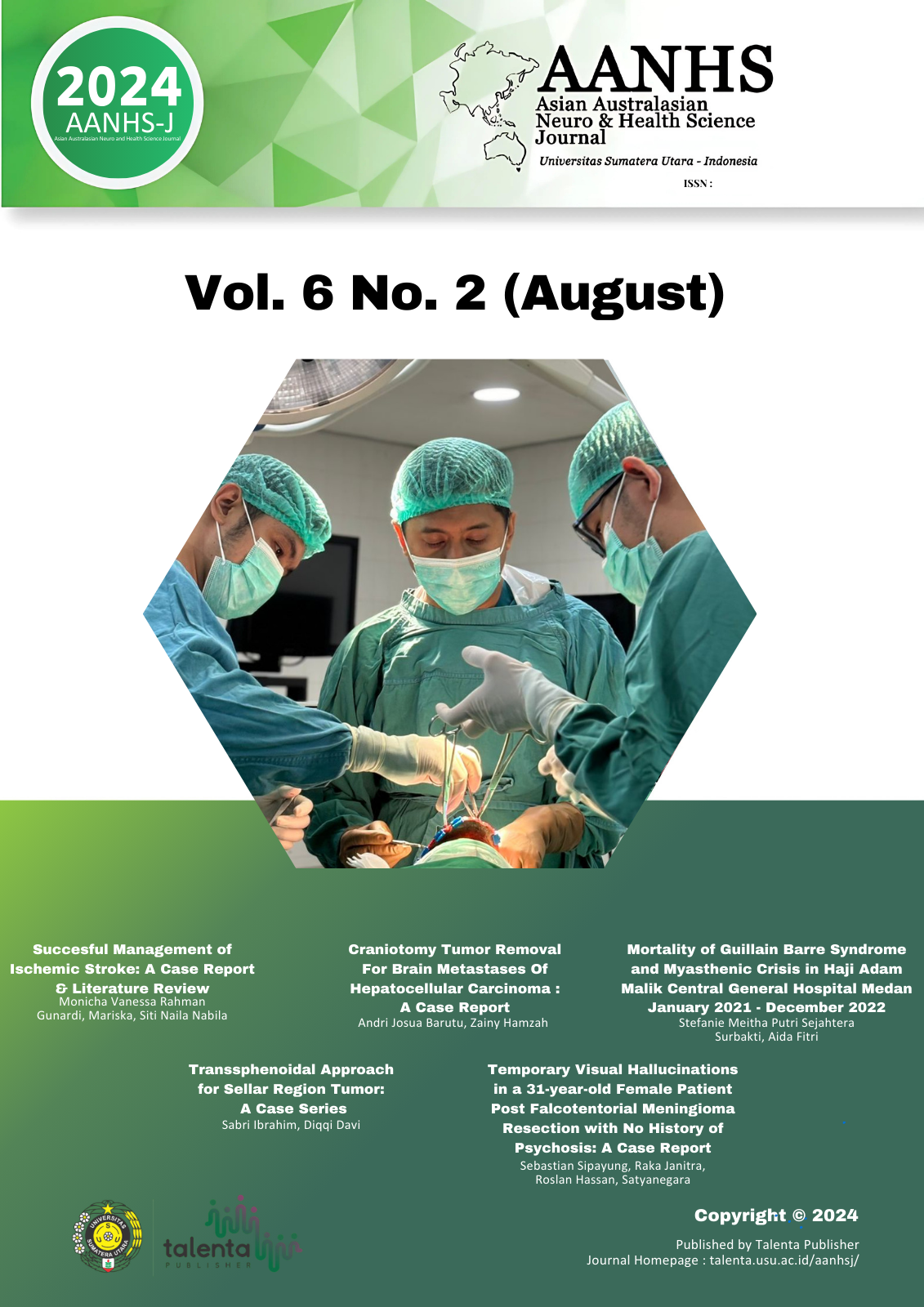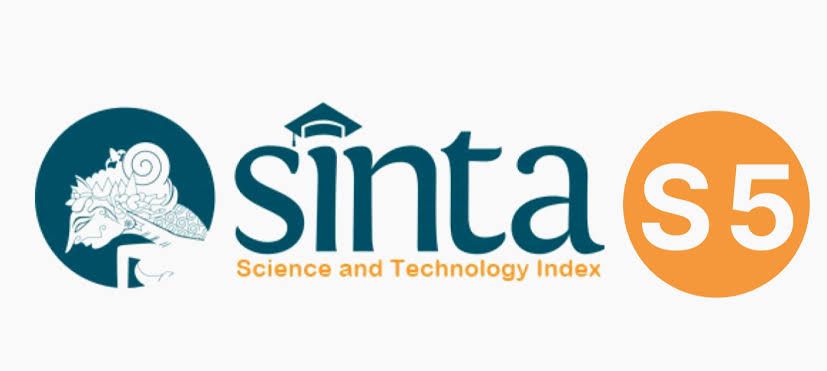Temporary Visual Hallucinations in a 31-year-old Female Patient Post Falcotentorial Meningioma Resection with No History of Psychosis: A Case Report
DOI:
https://doi.org/10.32734/aanhsj.v6i2.17699Keywords:
falcotentorial meningioma, visual hallucination, falcotentorial meningioma complication, homonym superior qudranopsiaAbstract
Introduction: Falcotentorial meningiomas are rare, comprising 1%–2% of all intracranial meningiomas, arising at the junction of the falx cerebri and tentorium. These tumors may compress the quadrigeminal plate and/or splenium, leading to peduncular hallucinosis—vivid, colorful visual hallucinations of people and animals, which can persist even after tumor removal.
Case Description: A 31-year-old woman with no psychosis history presented with a bilateral visual field deficit and left extremity weakness. Brain MR imaging revealed a lobulated mass attached to the right cerebellar tentorium, posterior falx cerebri, and adjacent venous sinuses. Visual field analysis showed homonym superior quadranopsia. Following craniotomy and tumor removal, histology confirmed a mixed-type meningioma. Post-surgery, the patient experienced vivid visual hallucinations that resolved in two weeks, but bilateral visual field deficits remained. A post-op CT showed reduced structural compression around the lesion with slight narrowing of the quadrigeminal cistern.
Discussion : Visual hallucinations in falcotentorial meningioma patients, often as peduncular hallucinosis, occur due to compression of the quadrigeminal plate and/or splenium and may persist post-surgery if lesions are present in the cerebral peduncles or nearby midbrain areas.
Conclusion: The patient's temporary hallucinations may have resulted from post-resection tissue edema causing quadrigeminal cistern narrowing or indicate lesions in the cerebral peduncles or adjacent midbrain regions.
Downloads
Downloads
Published
How to Cite
Issue
Section
License

This work is licensed under a Creative Commons Attribution-ShareAlike 4.0 International License.
The Authors submitting a manuscript do understand that if the manuscript was accepted for publication, the copyright of the article shall be assigned to AANHS Journal.
The copyright encompasses exclusive rights to reproduce and deliver the article in all forms and media. The reproduction of any part of this journal, its storage in databases and its transmission by any form or media will be allowed only with a written permission from Asian Australasian Neuro and Health Science Journal (AANHSJ).
The Copyright Transfer Form can be downloaded here.
The Copyright form should be signed originally and sent to the Editorial Office in the form of original mail or scanned document.














